Maria Morris Miller (1810–1875)
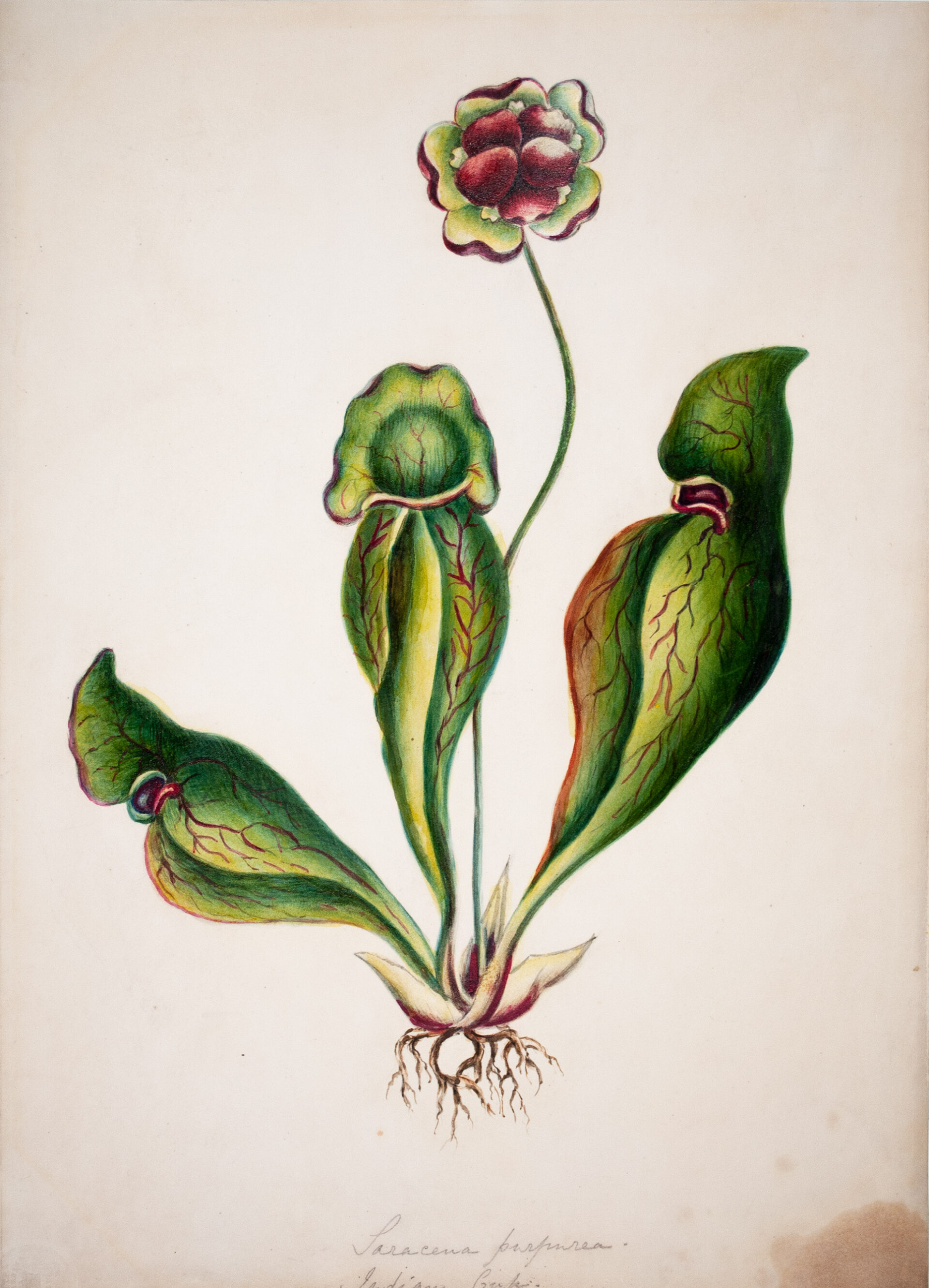
Maria Morris Miller, Saracena [sic] Purpurea. Indian Cup [Northern Pitcher Plant], c.1883
Watercolour on paper, 34.3 x 24.4 cm
Art Gallery of Nova Scotia, Halifax
Maria Morris Miller is usually credited with being Halifax’s first woman professional visual artist. (Christianne Morris [c.1804–1886]—no relation—was considered an artisan or craftsperson by critics and historians until recently.) Born into a prominent Halifax settler family, Maria Morris likely received her first art lessons at a school run by Eliza Thresher (1788–1865) on Salter Street. Morris attended art classes taught by W.H. Jones (active at Dalhousie College 1829–1830), and some of her work was included in Halifax’s first art exhibition, organized by Jones in 1830. Morris chose to concentrate on floral painting, which in the nineteenth century was considered a suitable genre for women painters. Perhaps inspired by Titus Smith (1768–1850)—the first Secretary of Agriculture for Nova Scotia, who for an 1802 commissioned survey of the province’s interior had included drawings of plants with descriptions—by 1833 Morris began to produce a series of watercolour drawing albums of native flora with her own descriptions.
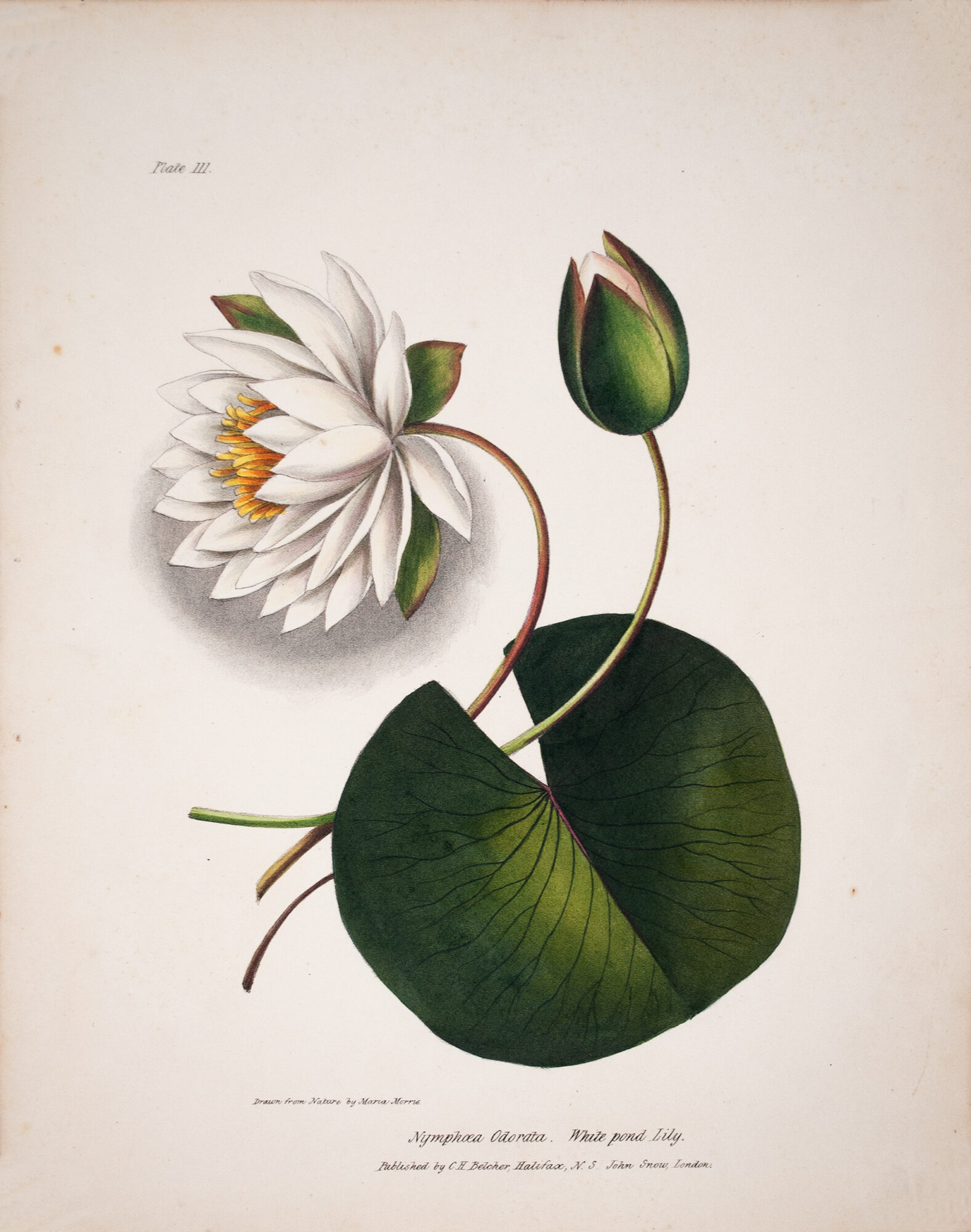
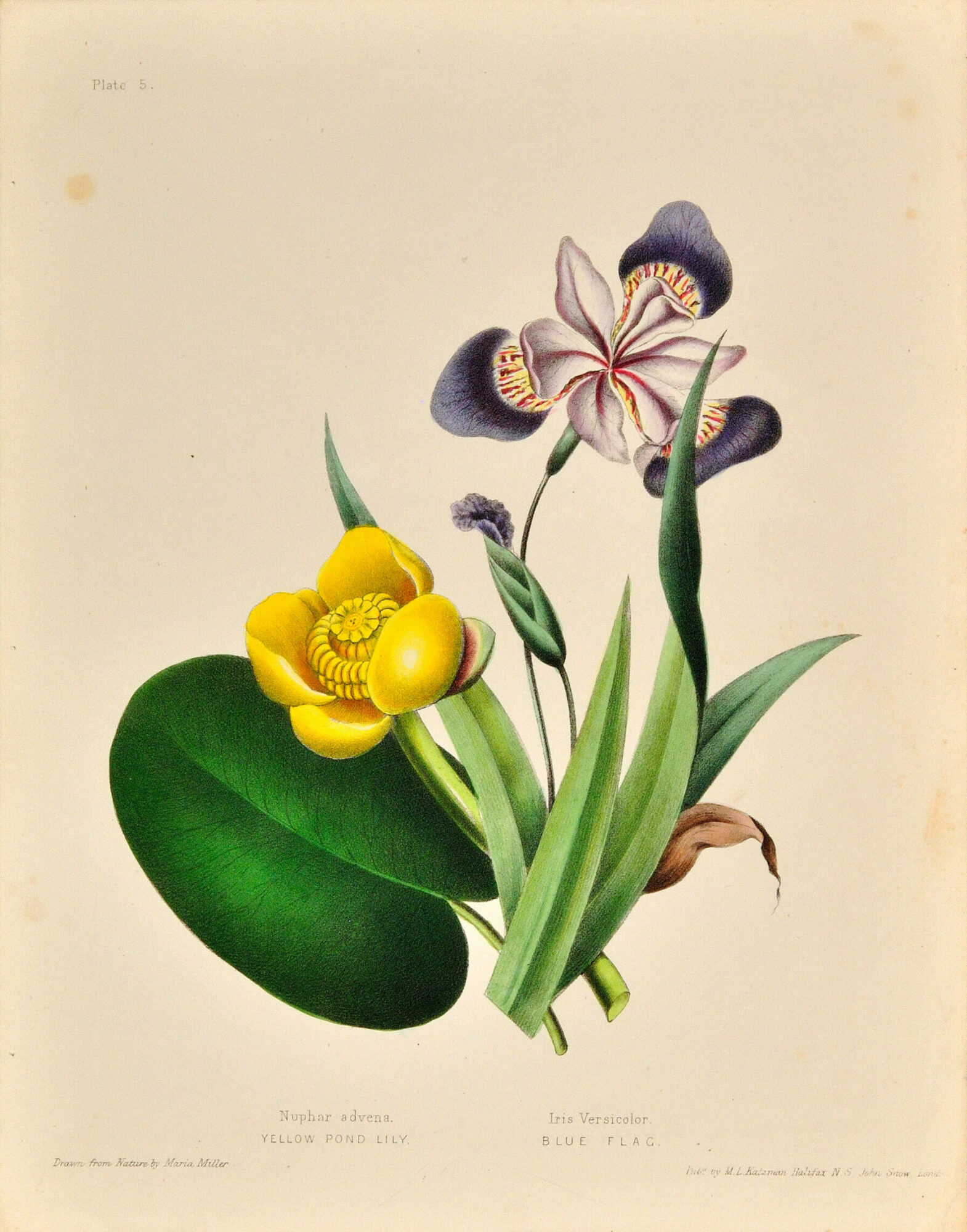
She rapidly gained attention as an artist and was named “Painter of the Year” by Halifax’s North British Society in 1836. Morris produced her albums of watercolours throughout the 1830s, which she offered for sale. In 1840 she had six of these watercolours printed as lithographs in London, with descriptions by Titus Smith. A set of these prints was accepted by Queen Victoria, further burnishing Morris’s reputation at home.
She married Garret Miller in 1840 and her artistic career was interrupted for the next decade as she cared for their five children. By 1850, however, she was teaching art in Saint John, New Brunswick. In 1852 she returned to Halifax and opened a school. Her London publisher issued a second set of prints in 1853, with scientific notations by Alexander Forrester (1805–1869), a clergyman and educator who lectured on botany at the Halifax Mechanics’ Institute. It was not until 1866 that she issued a third set of lithographs, with notations by Dalhousie University professor George Lawson (1827–1895), the founder of the Botanical Society of Canada and a president of the Royal Society of Canada. As a fourth set, in 1867 she reissued the first six plates on new stones as Wild Flowers of Canada, with text by Lawson.
In 1867 a selection of her drawings was included in the Nova Scotia display at the International Exhibition of 1867 in Paris. Maria Morris Miller was the first woman in Nova Scotia’s history to make a living through teaching art and the sale of her work. She depicted Nova Scotia flora at life-size, striving to create objects of beauty that were also of scientific utility. To this day her work is regularly exhibited in Halifax.

 About the Author
About the Author
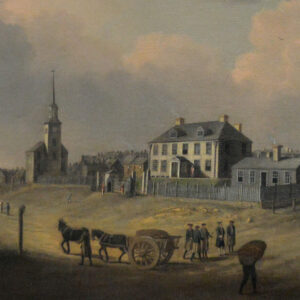 More Online Art Books
More Online Art Books
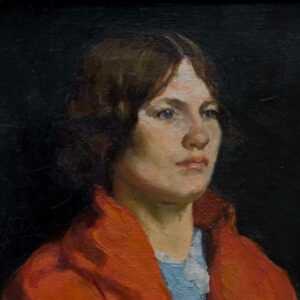 Acknowledgements
Acknowledgements